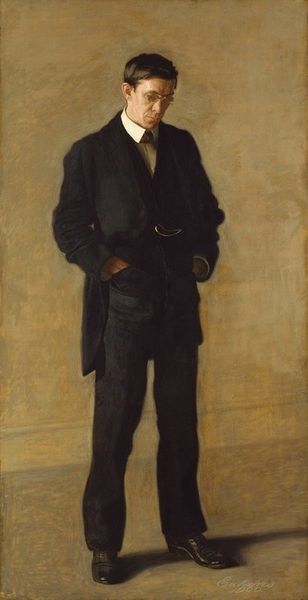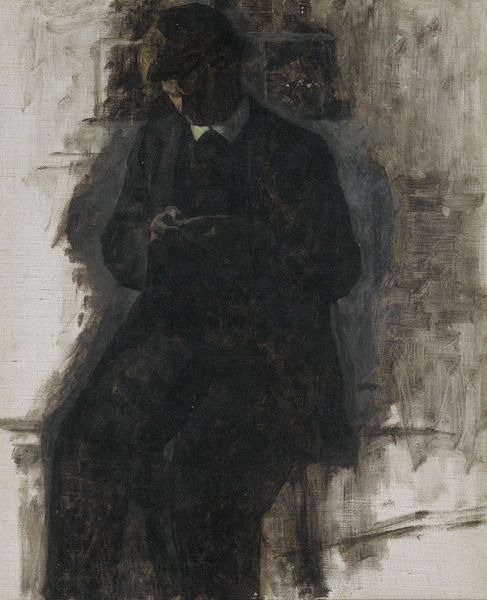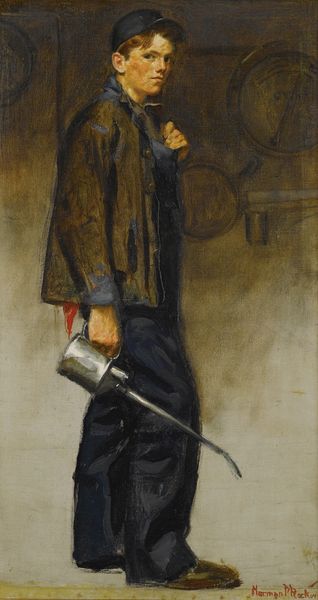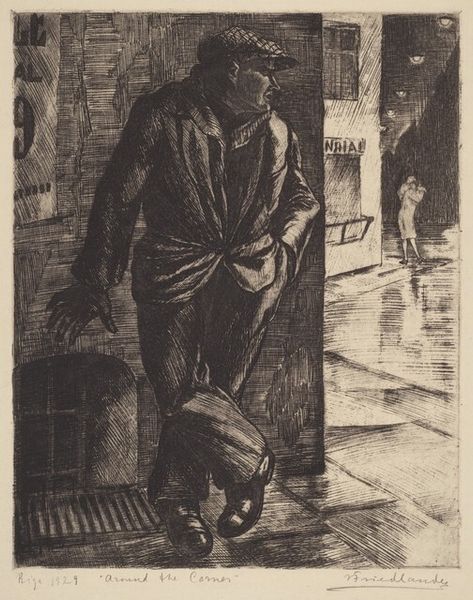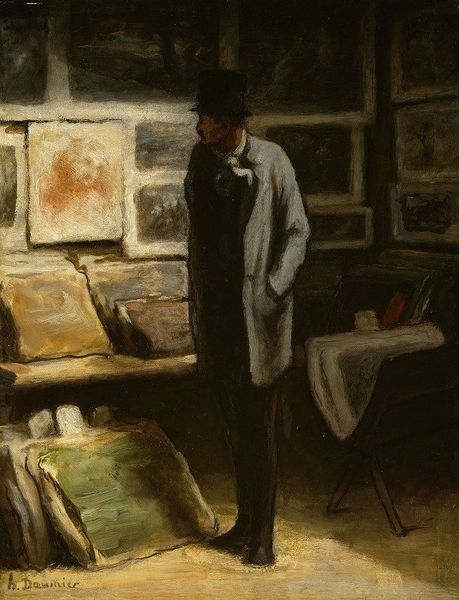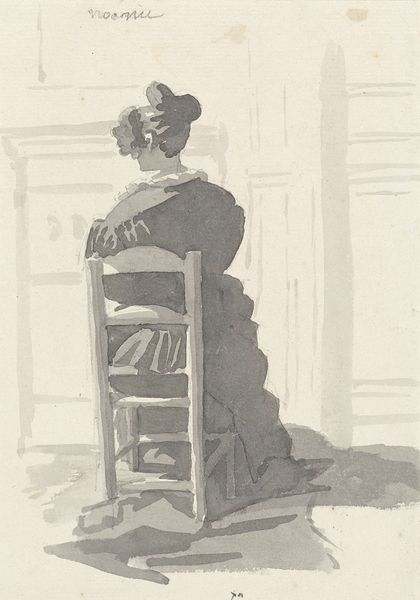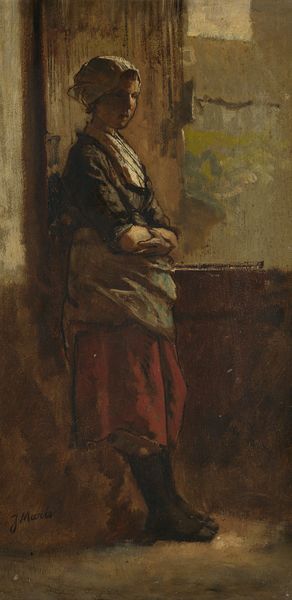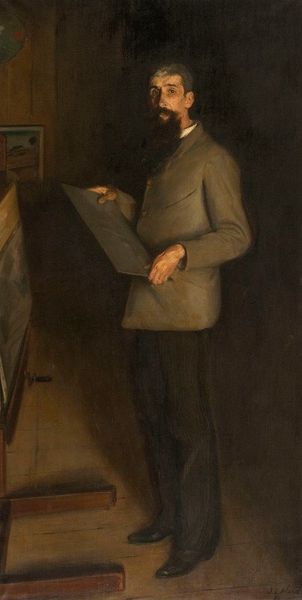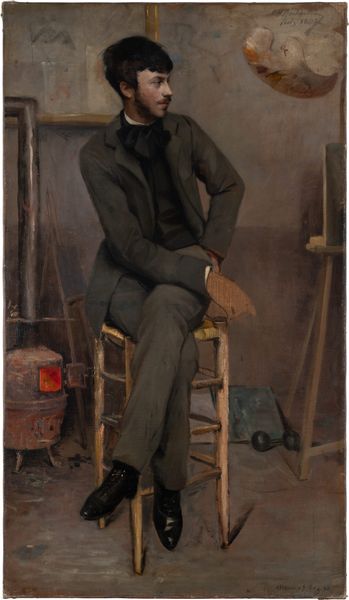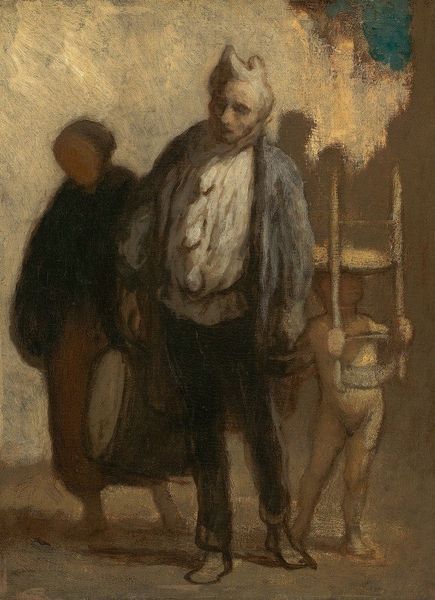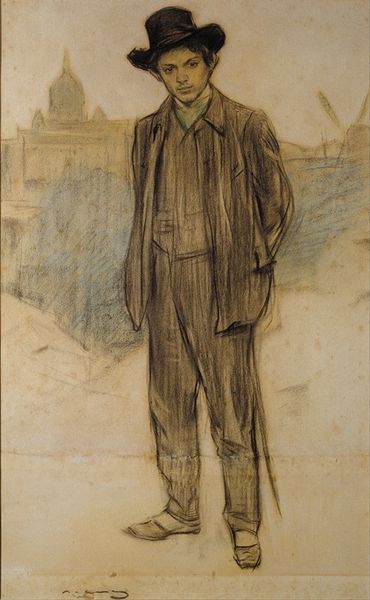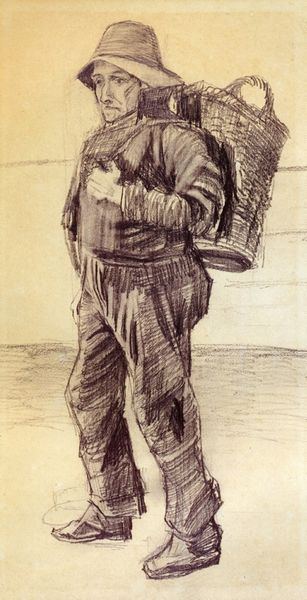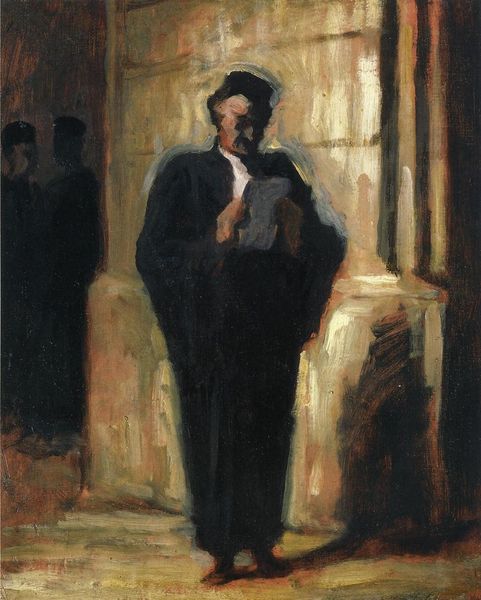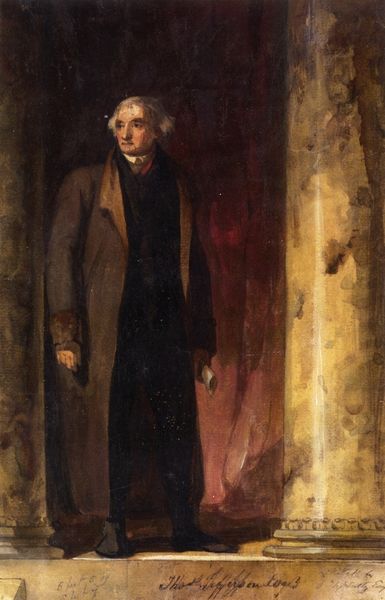
painting, oil-paint
#
portrait
#
painting
#
oil-paint
#
landscape
#
oil painting
#
romanticism
Dimensions: 33 cm (height) x 22 cm (width) (Netto), 38.4 cm (height) x 26.9 cm (width) x 3.5 cm (depth) (Brutto)
Curator: Here we have Constantin Hansen's 1837 portrait, "The Painter Ditlev Blunck," held at the SMK. What catches your eye? Editor: A distinct melancholic mood. He stands on what appears to be a balcony, perhaps overlooking Italy, but his averted gaze suggests inner contemplation more than appreciation of the vista. What’s with the hand-rolled cigarette? Curator: It's oil paint on canvas. Note the texture; it's quite smooth overall. Hansen was concerned with material reality. The railings suggest both a boundary and a connection. Blunck is isolated, yet still part of society. He worked and trained along Hansen in Rome at that time, and they remained friends for a long while. Editor: That cigarette is visually powerful. It speaks of leisure, a new access to global commerce, but also something slightly louche—not yet morally weighted, but certainly new to cultural symbolics. What do we make of it today, I wonder. Curator: Fascinating; indeed, consider the craftsmanship involved, from the processing of tobacco leaves to their import to Europe, and Blunck's manual skill in rolling. And it speaks volumes about contemporary modes of production and distribution, now considered an integral part of the global capitalist machine. The portrait thus operates as a product and a social symbol. Editor: Right. The balcony acts as a proscenium, turning this rumination into theater. He’s on display for our judgment and interpretation. What meaning are we supposed to extract from this solitary smoker? Curator: I think it is less about extraction and more about understanding. How did these individuals fit within their era? I see the influence of the Neoclassical training, for instance, but tinged with Romantic sensibilities. We can begin to unpack the materials available to the painter to create a mood in that space, and through Blunck show him as someone connected to new, global forces. Editor: A material analysis certainly enriches how we view the image. He remains an enigma, but at least now he's an enigma situated within a historical reality that takes its place on a material-driven stage. Curator: Exactly. Art offers unique glimpses into specific times and their effects on artistic production. It leaves an imprint in visual form.
Comments
No comments
Be the first to comment and join the conversation on the ultimate creative platform.
